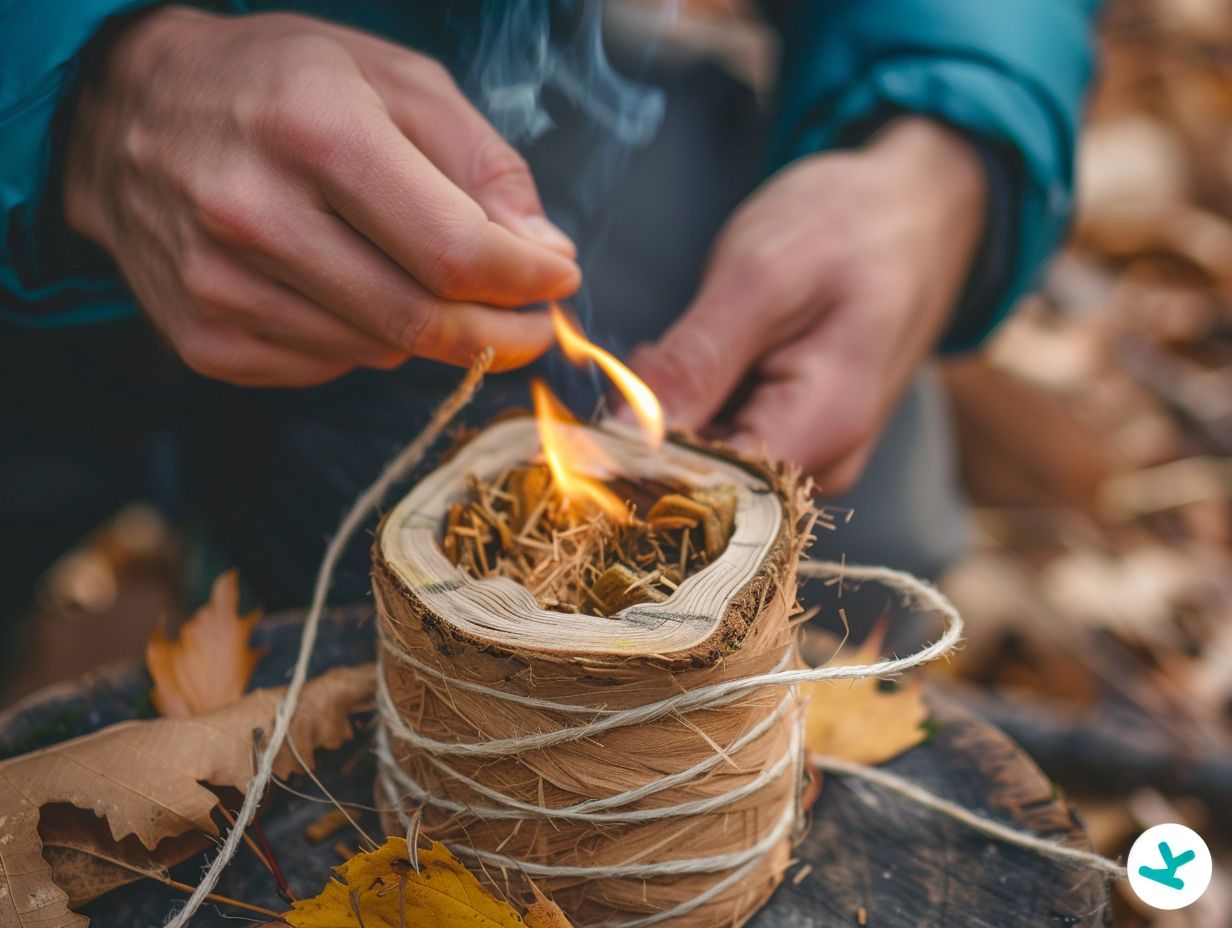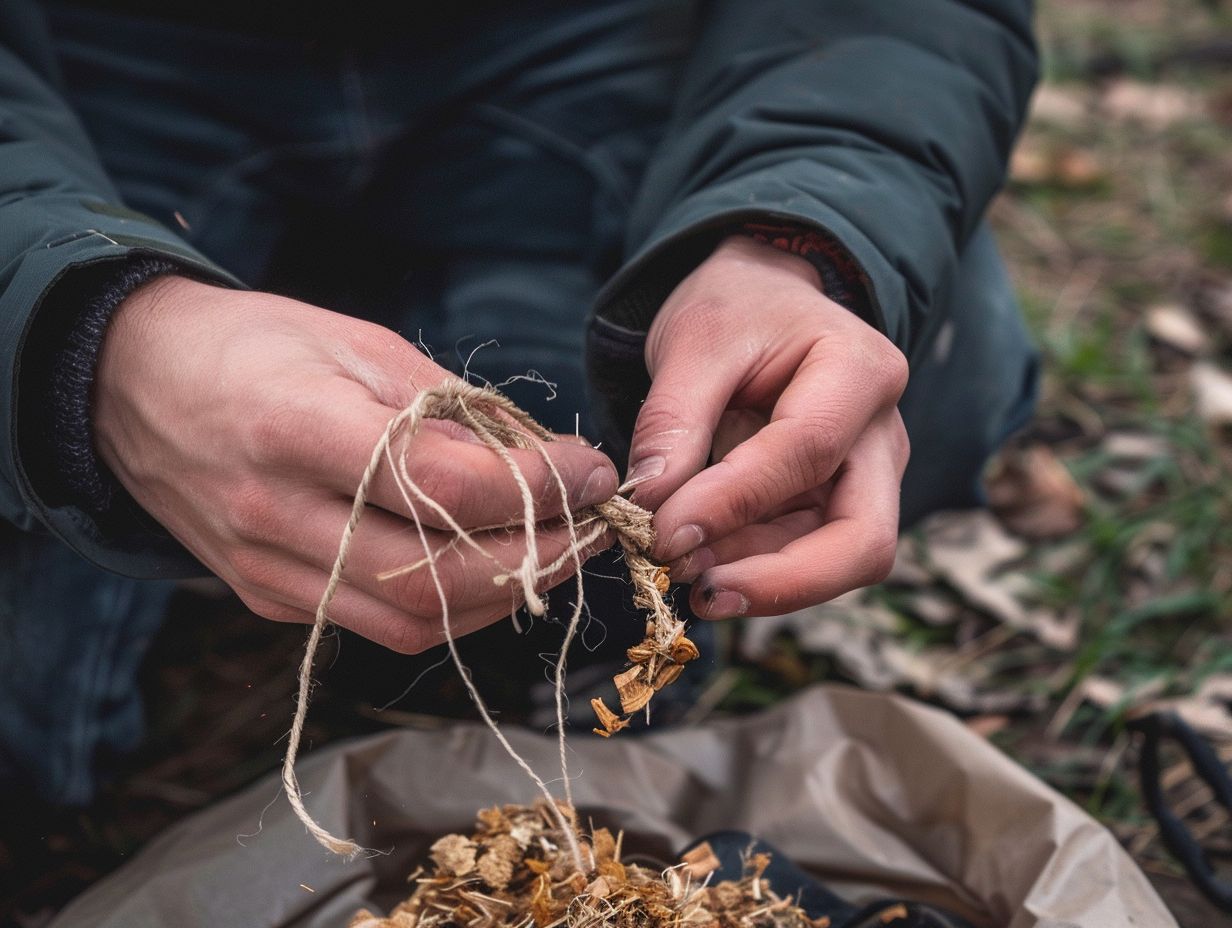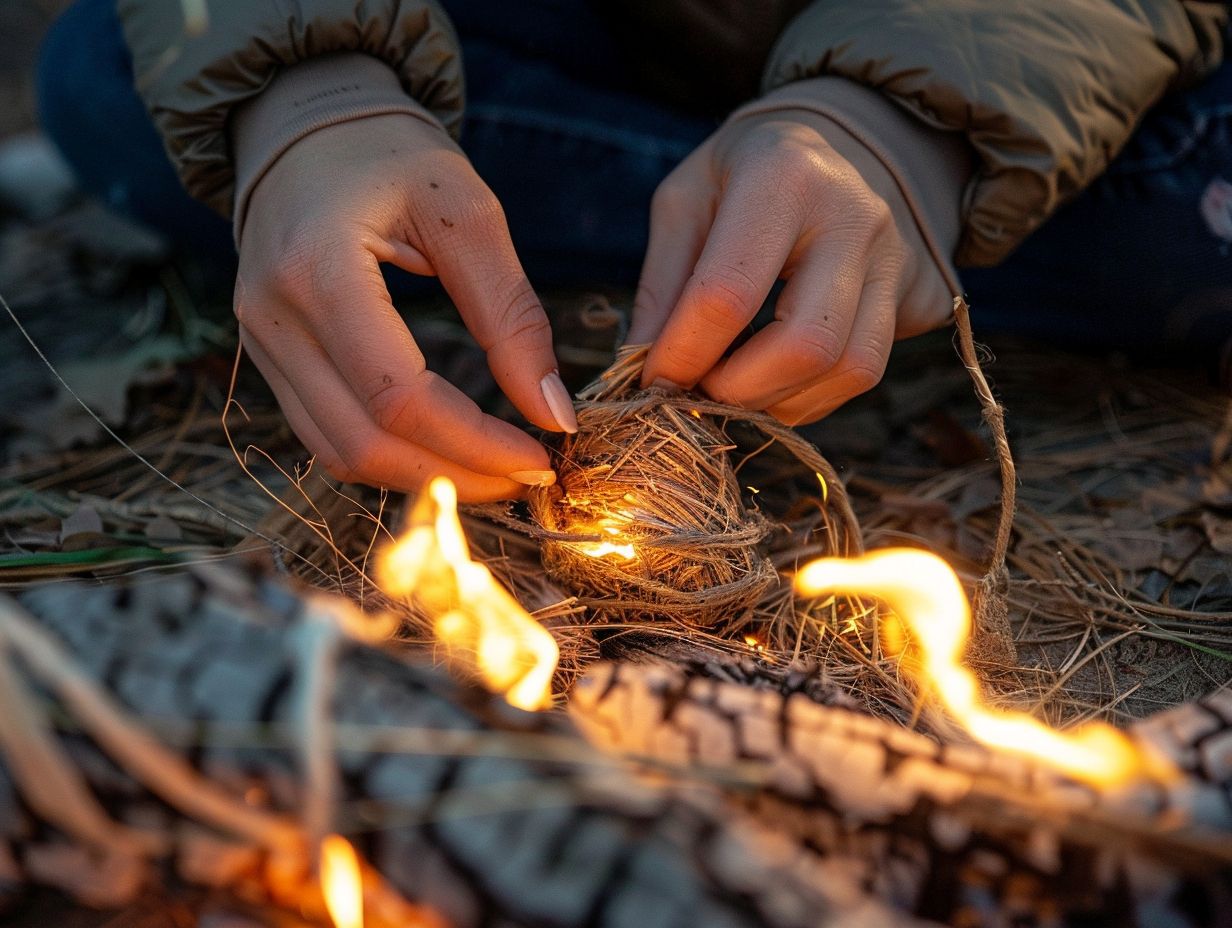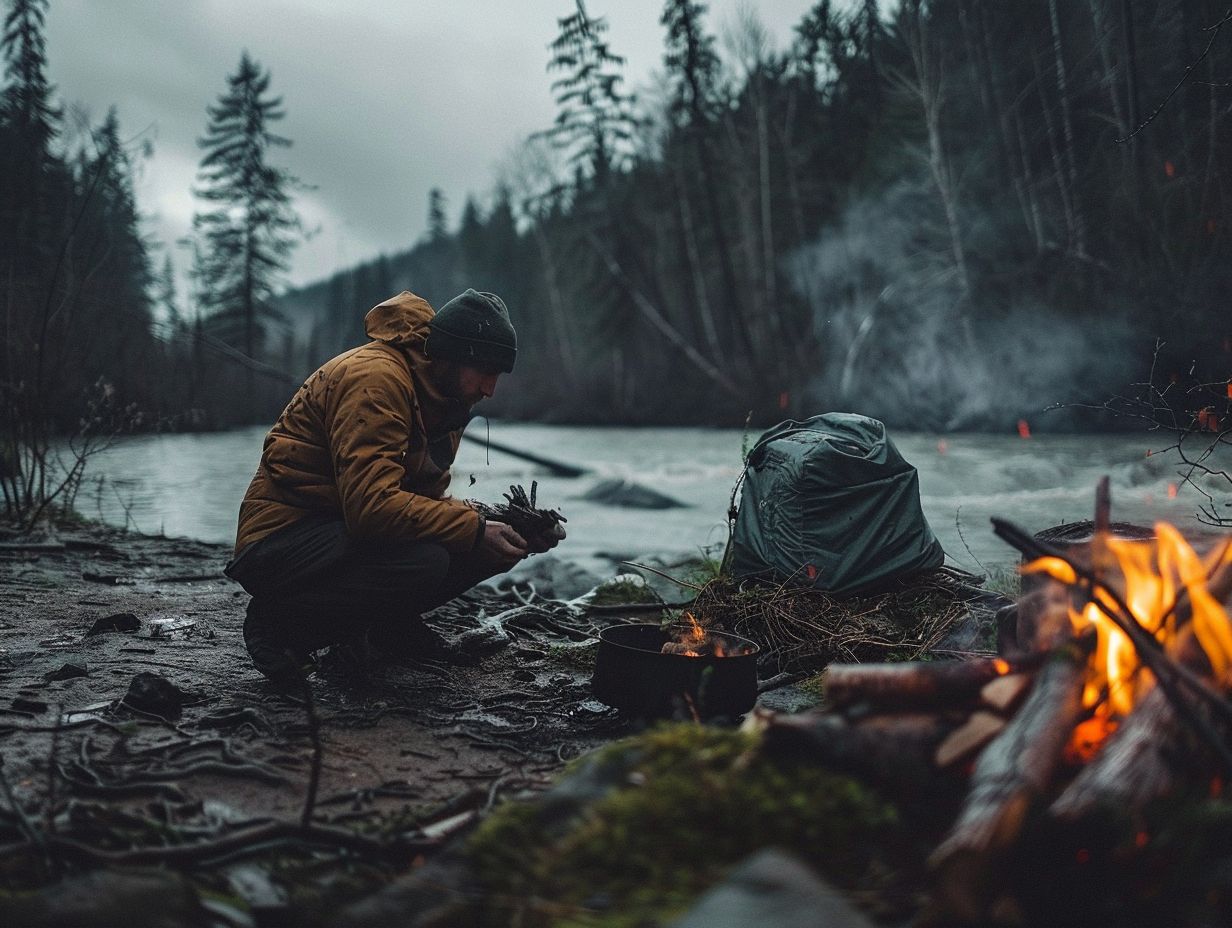Are you tired of relying on store-bought fire starters for your camping trips? This article will present the benefits of creating your own DIY fire starters. From cost savings to reducing your environmental impact, there are numerous reasons to consider this approach.
Different types of DIY fire starters, the required materials and tools, and detailed instructions for their creation will be explored.
Additionally, guidance will be provided on using these homemade fire starters during your camping excursions, covering topics such as proper storage and safety measures.
Prepare your supplies and let the process commence!
Key Takeaways:

- Save money and reduce environmental impact by making your own fire starters for camping.
- Choose from a variety of materials and easy step-by-step instructions to create DIY fire starters.
- Proper storage, usage, and safety precautions are key for successful and safe use of DIY fire starters on camping trips.
Why Make Your Own Fire Starters?
Creating your own fire starters can be a beneficial and economical method to ensure you are well-prepared for outdoor excursions or emergencies. By crafting DIY fire starters, you can dictate the materials utilized, guaranteeing they align with your preferences and requirements.
This practice not only permits you to save funds in contrast to buying commercial fire starters but also grants you the liberty to tailor the size, shape, and even the fragrance of your DIY fire starters. Homemade fire starters can prove to be more dependable in diverse weather conditions, assuring you can effortlessly and efficiently ignite a fire when necessary.
The feeling of achievement and self-reliance that accompanies producing your own fire starters is a supplementary benefit that enhances the overall gratification of the undertaking.
Types of DIY Fire Starters
In the realm of DIY fire starters, you have access to a variety of options that can be crafted using common household items and natural materials. These options span from basic wax and sawdust starters to complex fire starter kits containing multiple components.
Materials and Tools Needed
When creating DIY fire starters, you will need a few essential materials and tools. Common materials for this project include wax, sawdust, cotton balls, dryer lint, and cardboard. Plus these materials, tools such as a double boiler, scissors, a muffin tin, and a container for storage are also necessary for the process.
It is crucial to ensure your safety by wearing additional protective gear like gloves and protective eyewear to prevent accidents while working with hot wax. Working in a well-ventilated area is essential to avoid inhaling fumes, and having a fire extinguisher nearby is a recommended precautionary measure.
Consider using a heat-resistant surface or mat to protect your workspace from any spills or drips. Always remember to carefully read and follow any instructions or safety guidelines that come with the materials and tools you are using for creating the fire starters.
Step-by-Step Instructions for Different Types

When creating DIY fire starters, you need to follow specific steps based on the type you choose. For wax and sawdust starters, you must melt the wax, combine it with sawdust, and then pour the mixture into moulds. If you opt for cotton wool ball starters, make sure to soak the balls in wax and allow them to cool.
If you are working with cardboard egg carton starters, start by filling each compartment of the carton with materials such as tumble dryer fluff, old candles, or paper shreds. Next, pour melted wax over the contents to bind them together.
After the wax hardens, you can tear apart the individual compartments to use as fire starters. It is crucial to store your homemade fire starters in a dry place to ensure their effectiveness for future use.
Benefits of Using DIY Fire Starters
Using DIY fire starters provides you with numerous benefits, including cost-effectiveness, sustainability, and reliable fire ignition. These homemade fire starters are not only efficient but also adaptable to various settings and requirements.
Cost Savings and Environmental Impact
Using homemade fire starters can result in significant cost savings compared to buying commercial alternatives. These DIY products reduce the need for single-use items and contribute to a more sustainable outdoor experience.
When you choose to make your own fire starters, you can save significant amounts of money in the long term, as the materials needed for their production are usually affordable and readily available. Producing and disposing of shop-bought fire starters often have environmental consequences, and by making your own, you can help lessen this impact and reduce waste production.
This environmentally conscious approach not only benefits the environment but also promotes a more sustainable mindset among outdoor enthusiasts, encouraging a commitment to conserving natural resources.
Tips for Using DIY Fire Starters on Camping Trips
When using DIY fire starters during camping trips, it is essential for you to store them properly, follow safety precautions, and be mindful of the environmental impact. By adhering to these guidelines, you can maximise the effectiveness of your homemade fire starters while maintaining a safe and enjoyable camping experience.
Proper Storage and Usage

For maximum effectiveness of DIY fire starters, it is recommended that you store them in a cool, dry location away from moisture and direct sunlight. Proper storage is essential to preserve the quality and longevity of homemade fire starters. By placing them in a sealed container or ziplock bag, you can prevent exposure to humidity, which may affect their ability to ignite easily.
When handling these fire starters, ensure that you are in a well-ventilated area to prevent the accumulation of harmful fumes. Always adhere to safety guidelines and never leave a fire unattended after using homemade fire starters to guarantee a safe and controlled burning experience.
Safety Precautions
When handling DIY fire starters, you must exercise caution to prevent accidents or injuries. Keep flammable materials away from open flames, use fire starters in well-ventilated areas, and have a fire extinguisher or water source nearby for emergencies. Never leave fire starters unattended and dispose of used fire starters properly in a safe manner.
Before igniting the fire starter, ensure that the surrounding area is clear of potential hazards such as overhanging branches or dry vegetation. Inform others nearby that you are using a fire starter to enhance safety awareness. Additionally, be mindful of wind conditions as they can influence the direction of the flames and potentially lead to unintended fires.
Final Thoughts and Recommendations
Making your own fire starters can be a fulfilling and practical skill that enhances your outdoor experiences. By following proper guidelines, utilising the right materials, and prioritising safety, you can enjoy the benefits of DIY fire starters while minimising environmental impact.
DIY fire starters offer a cost-effective and creative solution for igniting fires while camping, hiking, or even during backyard gatherings. Experimenting with various combinations of materials such as wax, dryer lint, sawdust, or cotton balls can lead to discovering the perfect formula that suits your needs.
It is crucial to practise creating and using these homemade fire starters in a controlled environment before relying on them in emergency situations. Always remember to store them in airtight containers and keep them away from children and pets to ensure safety.
Frequently Asked Questions
What materials do I need to make DIY fire starters for camping?

To make DIY fire starters, you will need wax, sawdust or cotton balls, a small saucepan, a spoon, a cookie sheet, and a stove or heat source.
How do I make fire starters using sawdust?
First, melt the wax in a small saucepan on low heat. Then, mix in the sawdust or cotton balls until they are fully coated. Remove from heat and let the mixture cool. Once it has solidified, break it into small pieces and store in a container for camping.
Can I use any type of wax for making fire starters?
Yes, you can use any type of wax that is flammable, such as paraffin, beeswax, or soy wax. However, paraffin wax is the most commonly used for fire starters as it is inexpensive and readily available.
Are there any alternative materials I can use other than sawdust?
Yes, you can use shredded paper, dryer lint, or even egg cartons as an alternative to sawdust. These materials work just as well for making fire starters and are often items you can find around your house.
How do I use the DIY fire starters when camping?
To use the fire starters, place them under your firewood and light the edges with a lighter or match. They will burn for several minutes, giving you enough time to get your fire going.
Are DIY fire starters safe to use?
As long as you use them in a well-ventilated area and follow safety precautions, DIY fire starters are safe to use. Be sure to handle them with care and keep them away from open flames or heat sources when not in use.



